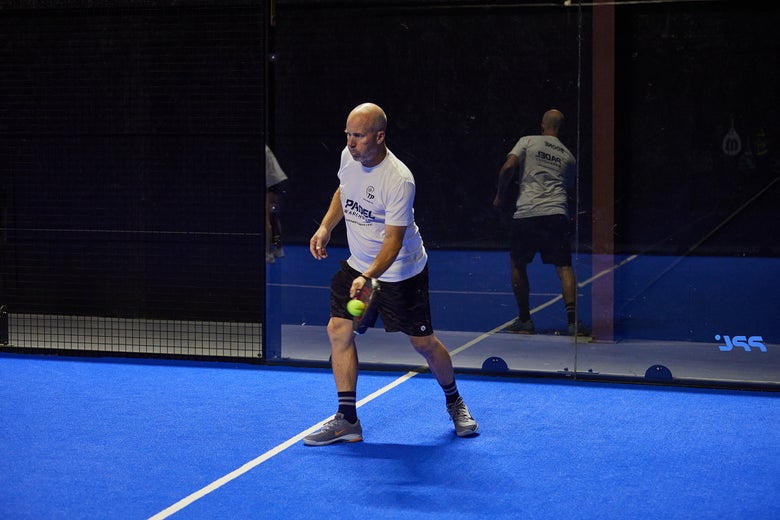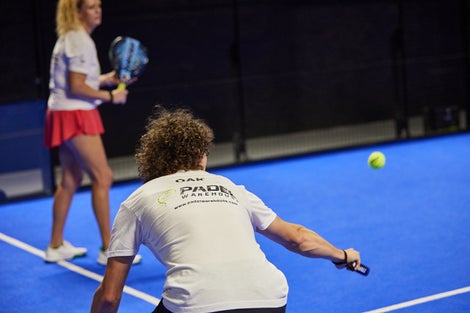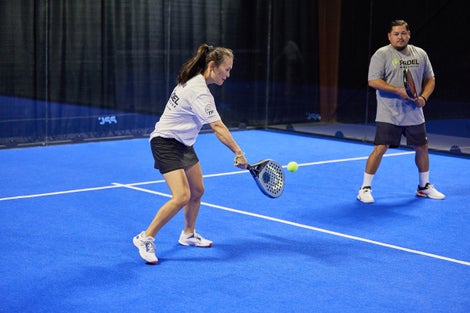Which Side to Play in Padel
One of the first things you will have to decide any time you walk on the padel court is which side to play. In padel, unlike tennis, players typically stay on one side the whole match, and while they will sometimes switch mid-point, one player typically plays "left" while the other plays "right." Let's get into each side of the padel court, and why you might want to play one side over the other.

Playing on the Left Side
The left side in padel is typically known as the "attacking" side between the two halves of the court. This side is usually better suited to players who have more confidence in their overheads, since many shots are directed to the middle of the court in padel, creating chances for an aggressive player to finish the point, or to put opponents in a harder position. Although oftentimes your partner's style of play will influence which side you choose. If you're able to seamlessly switch between offense and defense when you're playing with someone who is all-out attack, consider playing the right side to let them play more of their aggressive game. Make no mistake though, you will still have to play defense in most points on the left side in padel, so don't try to end the point immediately when the ball is hit to you on this side. If both you and your partner are left-handed, consider swapping the normal roles, and having the more aggressive player play on the right side to take advantage of more forehands in the middle.

Playing on the Right Side
In traditional padel schools of thought, the right side is usually more ideal for players who play a lot of natural defense and work the point consistently, trying to create more angles of opportunity for their team. Players with quick hands, a good lob, and fast reactions will slot in nicely on the right side. Additionally, if you are left-handed and playing with a right-handed player, having both forehands in the middle is usually a good idea. Smaller players who have an easier time defending shots down low off the back glass often do better on the right typically, where their larger partner on the left can reach more in the middle due to a longer wingspan.

Other Things to Consider
- Your partner gets lobbed frequently. If you're playing with someone shorter, this is not necessarily a disadvantage. The lob is already the most common shot in padel, so it's not as if your opponents wouldn't already be lobbing your team to begin with. These players who get lobbed frequently will likely have an easier time defending shots down low and getting more shots off the cage, since they have a better angle and will end up hitting more of these kinds of shots. In padel, this is actually an advantage, because the lob will help you oftentimes get back into a point and retake the net when all hope seems lost. Consider having this player play more of the right side (if they're willing) to increase your likelihood of getting better chances to end the point.
- Your partner has incredible defensive skills. Who doesn't love playing with a defensive wizard? These kinds of players are a delight to share the court with, and the upsides to defense in padel cannot be overstated. With these kinds of players on your side, consider strategizing about which zones of the court each player should protect. Having good communication with your partner will make your lives easier, and avoiding both players covering the same ball will leave less court space vulnerable to attack. Find out whether your defensive partner is better at retrieving tough balls in the back or tracking balls down at the net and then offer to do the opposite. Playing to your partner's strengths will help you both as a team, and be sure to boost their confidence after they make an incredible get with some verbal affirmation.
- Your partner is tall and/or smashes everything. Though padel is inherently more of a defensive game, offensive powerhouses have their place in this sport too (usually on the left side, per the above section). When you're paired with a power player, learning how to utilize their power will help you both have success. Try to create opportunities for your partner to get a smash by hitting lower shots nearer the back wall that your opponents will likely have to lob back up to your side of the court. Don't get complacent though, and be ready to counterattack in case your opponents track down your partner's smashes.


- Leave the tennis on the tennis court. In padel, you may be tempted to approach the game as you would doubles in tennis, maybe opting for your preferred side in that game instead of playing to your strengths in padel. Consider what you do best in rallies. Are you patient and willing to work the point to your advantage through lobs and touch shots? Consider playing the right side, even if you prefer ad-side in tennis. Do you have lots of natural power and love cranking overheads? The left side may be better for you, even if you play deuce-side in tennis more often than not.
- Learn to be versatile. At higher levels, players will likely specialize in one side over the other, but if you're learning the game still and just having fun with it, try to get comfortable playing both sides, and learning how you respond to different partnerships. Oftentimes which side you play in padel will be partner-specific, so try to be comfortable with both sides. This will also help you during play if you need to switch, as you'll be more familiar with the angles (and the walls) that the other side needs to be aware of.